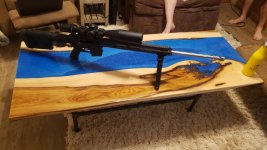Daver
PMA Member
All - I am planning on having at least some part of my timber logged sometime relatively soon. If I could describe it in general, I would say that I have plenty of hickory, mostly shagbark, some pig hickory too, good amounts of white oak in some areas and fair amounts of red oaks in other areas. There is some walnut, which I don't plan to take any at this time, and also some black oak, which they can take them all IMO. There's some other species present, but nothing notable that would be likely to be desired by the loggers.
I am roughly estimating that 50% of their take will be shag barks, with a mix of oaks, predominantly red and white, making up most of the rest. My main goal of this timber harvest is to thin my timber. Despite doing TSI work in the past, things have gotten "park like" again in some areas and I thought, "Hmmmm...instead of doing more TSI I could just organize a select harvest and take out A LOT, not all, of the shaggies and kill two birds with one stone." Thicken the timber and slide the percentage of species back towards more oaks and less hickories. My plan is to mark the trees that I want the loggers to remove, so I am in control of what gets cut.
With that said...and knowing that this type of question is difficult to answer if you have not seen the timber...please help me gauge how many trees to cut, or leave behind, say on a per acre basis. My feeling is that I am going to go very heavy on nearly all big shagbarks and some oaks...but how many oaks per acre should I leave? Just enough that I can get some crown openings? TIA.
I am roughly estimating that 50% of their take will be shag barks, with a mix of oaks, predominantly red and white, making up most of the rest. My main goal of this timber harvest is to thin my timber. Despite doing TSI work in the past, things have gotten "park like" again in some areas and I thought, "Hmmmm...instead of doing more TSI I could just organize a select harvest and take out A LOT, not all, of the shaggies and kill two birds with one stone." Thicken the timber and slide the percentage of species back towards more oaks and less hickories. My plan is to mark the trees that I want the loggers to remove, so I am in control of what gets cut.
With that said...and knowing that this type of question is difficult to answer if you have not seen the timber...please help me gauge how many trees to cut, or leave behind, say on a per acre basis. My feeling is that I am going to go very heavy on nearly all big shagbarks and some oaks...but how many oaks per acre should I leave? Just enough that I can get some crown openings? TIA.


